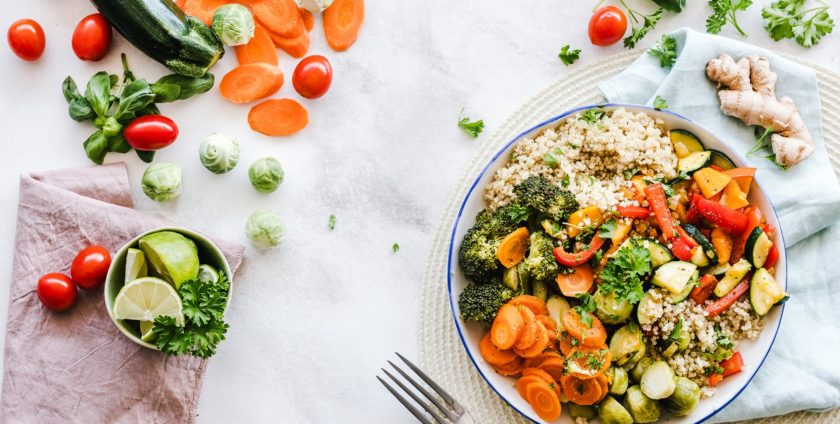Post-Christmas Nutritional Reset: A Step-by-Step Guide

As the festive season draws to a close, the prospect of returning to your usual eating habits might seem daunting. However, with a structured approach, this transition can be smooth and sustainable. Explore these steps designed to guide you towards a more balanced post-holiday routine.
Step 1: Say NO to diets
Before anything, resist the temptation to seek quick fixes, cleanses, or magic pill diets. They are unscientific and potentially dangerous. Sustainable change doesn’t come from drastic measures. What you really need is a gentle approach to nourishment and well-being.
Step 2: Reflect on Your Holiday Eating Habits
It’s important to look back at your eating practices over the festive period, but do so in a non-judgmental, compassionate manner. Some questions to ask yourself:
- Did you enjoy your meal choices?
- Did you listen to your hunger and fullness cues?
- Did you overindulge on some occasions? If so, what made you vulnerable at the time? And what are your thoughts and feelings about it?
- Overall, what went well (or better than before), and what would you like to further improve?
This is a crucial step as a balanced self-reflection will support your self-awareness and ultimately your self-efficacy.
Step 3: Grocery list & Meal Prep
It’s time to clear the kitchen of holiday leftovers and snacks. A well-thought grocery list with ingredients for nourishing, enjoyable meals will support your nutritional reset. Meal prep will offer you structure and guide your grocery shopping list. You can then create a flexible, provisional weekly meal plan as a reference. Some tips:
- Have regular meals and snacks – plus include some fruit or vegetable with most.
- Make sure your main meals are complete, i.e. they include a source of protein, carbs, good quality fat and some vegetables.
- Batch cook and either freeze meals or use leftovers with a different side the next day.
- For a satisfying snack, combine carbs with protein or good quality fats e.g. yoghurt with fruit, avocado and toast, cheese and crackers, banana and peanut butter.
- Ensure you have at least two portions of calcium per day (e.g. milk, yogurt, cheese or non-dairy, calcium fortified alternatives). Breakfast and snacks are good opportunities to ensure consistency!
- Keep well hydrated – a water bottle or a hydration app can be helpful!
- Limit alcohol – especially if you feel your intake was higher than usual over Christmas.
Step 4: Mindful Eating Practices
Practising mindful eating can be a game changer in your relationship with food. Here are some strategies that will support you in this process:
- eat slowly: take smaller bites, chew thoroughly, and put your utensils down between bites. This allows your body to register satiety cues, aiding digestion and preventing overeating.
- savour your food: engage your senses by noticing the colours, textures, and flavours of your meal. Take time to appreciate each bite, enhancing the enjoyment of your food and promoting a feeling of satisfaction
- listen to (and respect) your hunger and fullness cues: pause during the meal to assess your hunger level. Tune in to how your body feels and stop eating when you feel comfortably satisfied, not overly full.
- eat with no distractions: minimise distractions like phones or screens while eating. Focus solely on your meal to prevent mindless eating, allowing you to savour and appreciate your food.
- remain guilt-free and non-judgmental: approach food choices with kindness and understanding. Avoid self-criticism about what or how much you’re eating. Embrace a positive, non-judgmental attitude towards your relationship with food.
Step 5: Movement
You don’t need to start going to the gym every day or come up with unrealistic fitness challenges. Movement is SO important for our bodies – but can become a trap when it’s done to “earn” or “burn” calories. Gentle, enjoyable exercises or activities are a great way to build up your strength while supporting your mental health (and sleep!).
Step 6: Set Realistic Goals
Habits take long to be established and longer to change. Therefore, breaking down your long-term objectives into smaller, achievable goals that are relevant to you is key. Recording your progress and being accountable (to yourself or someone else) can be helpful when you start this process, but make sure this is done through meaningful changes in your behaviour rather than the number on the scale, calories or other unhelpful tracking methods.
Conclusion
As you embark on this journey, remember that small, mindful changes pave the way for lasting transformation. Embrace these steps not as strict rules, but as guiding principles to support your well-being. This isn’t just about a temporary adjustment; it’s about fostering a healthier, more balanced relationship with food. Stay committed, stay compassionate, and enjoy the journey!
If you need help with your nutritional reset, check the plans I offer and book your free discovery call to discuss your nutritional needs and how I can support you.
You can also subscribe to my newsletter and follow me on Facebook and Instagram for more gentle nutrition advice and updates.
0 Comment
 Your Greek Dietitian Online
Your Greek Dietitian Online
Leave a Reply